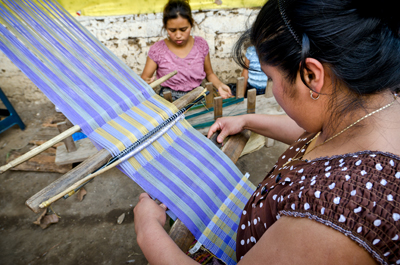Fashion Week 2012 in New York this past week showed that the latest muse is sustainability, and that this values-driven focus is giving birth to a stronger independent streak as well.
Some of us thought it was settled that “sustainable” meant triple bottom line — people, planet, profit. But because the “profit” part gets tricky when you pivot to the “planet” part, some designers (and other businesses) are exploring how to be “sustainable” and still survive.
Standards and indexes are being developed to help designers and consumers measure fashion’s carbon footprint as well, such as the Higg Index 1.0, newly developed by the Sustainable Apparel Coalition and its big-league members for internal use only (board members include Walmart, Nike, REI, and Patagonia). Coco Perez reports that H&M, Adidas, Gap, Nike, and JCPenney have all scored themselves using the Higgs Index. There’s also the Global Organic Textile Standard,” (GOTS) developed “to define world-wide recognised requirements that ensure organic status of textiles, from harvesting of the raw materials, through environmentally and socially responsible manufacturing up to labelling,” according to their website.
The Independent Streak
Independent designers with small, burgeoning, self-funded, shoe-string operations are interpreting “sustainability” based on their priorities and capabilities. It’s a creative challenge to find non-toxic dyes, organic/natural fabrics and materials, reduce transportation costs, pay laborers a respectable wage, and still turn a respectable profit, especially without deep pockets.
“Sustainability focuses on manufacturing textiles in an environmentally conscious manner, by using fewer chemicals, properly disposing of chemicals that have to be used, and by trying to retain as much of the textile’s original integrity as possible,” one independent designer, Priti Bali, wrote me. She continued, “My label is sustainable because I only use textiles from nations that champion these (GOTS) standards and apply them to their manufacturing processes.”
Priti Bali designs and manufactures what she calls “modular” clothing — simple “staple” pieces like a pencil skirt or vest that can be “transformed” from office attire to night club sass by virtue of a zipper or snaps that add or remove length, sleeves or lace. She calls this,”Doing more with less.” Bali’s pieces range in price from $30 to $250. I saw a glimpse of them at Nolcha Fashion Week, which showcases independent, growing fashion designers to give them crucial visibility at Fashion Week.
 Priti Bali outfit
Priti Bali outfit
Another independent streak at Nolcha was Glocal Collection, which distributes colorful scarves and beaded jewelry. Glocal’s CEO Yenifer Lam and President Vicky Cohen told me the scarves are made from organic cotton and natural, bio-degradable dyes that do not pollute the water, and are hand-woven and hand-beaded by women in rural villages in Guatemala. What Lam says also makes Glocal “sustainable” is that they are helping these indigenous people in her native Guatemala – mostly women — learn business skills and improve their standard of living. Glocal’s necklaces, bracelets and scarves sell for between $35 and $400, exclusively at “pop-up boutiques” (a mobile boutique innovation), online through their website, or at private events.

Glocal weavers in Guatemala
Fashion With a Mission
After all these years of horrible news stories about large manufacturers using “sweat shops” and the like in rural countries where workers are desperately underpaid and ill-cared for, it is admirable that the fashion industry is focused on taking care of the people who make its profits possible.
This is especially admirable for independent designers who have fewer resources and smaller margins, and who therefore are risking their very survival to do the right thing by these workers. It’s innovating the fashion business by infusing it with a mission — to help small business and rural communities with economic development, or the “people” part of the triple bottom line.
Because the raw textiles come from outside the U.S., there’s the transportation factor in the carbon footprint equation. Bali manufactures in the New York area (Brooklyn, Manhattan and soon Queens), and Glocal’s transportation costs are reduced by the proximity of Guatemala, versus India or China.
Will It Sell?
Who is buying these independent, “sustainable” brands? Professional women mid-20’s to early 40’s, “with an eclectic style” who like to travel. Interestingly, Priti said “The largest racial group to purchase my pieces has been Asian and Hispanic. Black women come in a close second.”
Only selling for one year, Priti and Glocal are brand new lines, but they are making a respectable showing so far and demonstrating that independent fashion with a values/sustainability-based mission is an innovation whose time has come.
Securing a prominent showcase in New York’s Fashion Week alone is a good sign.
This post also appears on the Huffington Post. Read the original post here.








